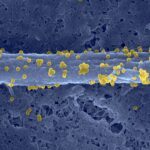Link to Pubmed [PMID] – 26159730
Link to DOI – 10.1016/j.antiviral.2015.07.002S0166-3542(15)00165-5
Antiviral Res 2015 Sep; 121(): 120-31
Chikungunya virus (CHIKV) is an arbovirus transmitted to humans by mosquito bite. A decade ago, the virus caused a major outbreak in the islands of the Indian Ocean, then reached India and Southeast Asia. More recently, CHIKV has emerged in the Americas, first reaching the Caribbean and now extending to Central, South and North America. It is therefore considered a major public health and economic threat. CHIKV causes febrile illness typically associated with debilitating joint pains. In rare cases, it may also cause central nervous system disease, notably in neonates. Joint symptoms may persist for months to years, and lead to arthritis. This review focuses on the spectrum of signs and symptoms associated with CHIKV infection in humans. It also illustrates how the analysis of clinical and biological data from human cohorts and the development of animal and cellular models of infection has helped to identify the tissue and cell tropisms of the virus and to decipher host responses in benign, severe or persistent disease. This article forms part of a symposium in Antiviral Research on “Chikungunya discovers the New World”.

